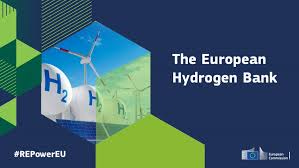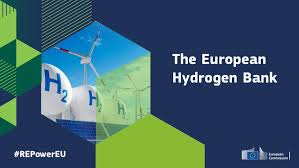EU’s second hydrogen auction: eligible projects should have no more than 25% electrolyzer stacks sourced from China. What are the Chinese companies’ mitigation strategies?
On 27 September 2024, the Commission published the final Terms and Conditions (T&Cs) for its second auction for the production of renewable hydrogen (IF24 Auction), via the Innovation Fund. This auction, which is a key pillar of the European Hydrogen Bank (EHB), provides financial support to producers of hydrogen categorized as Renewable Fuel of Non-Biological Origin (RFNBO).
The auction will open on 3 December 2024 and will award up to €1.2 billion support to renewable hydrogen producers located in the European Economic Area (EEA). Building upon the success of last year’s pilot auction (IF23 Auction), the second auction will further contribute to the creation of a European market for renewable hydrogen by de-risking investments with public support.
The successful bidders under the IF24 Auction will receive a fixed premium in €/kg of renewable hydrogen produced, over a maximum of ten years of operation. The Innovation Fund support will bridge the gap between production costs and the price that off-takers’ are ready to pay for renewable hydrogen.
The Terms and Conditions for the second auction include new resilience requirements, building on the lessons of the pilot auction and facilitating a contribution of EU funding to the objectives of the Net-Zero Industry Act (NZIA). Projects will be evaluated on a new criterion: “Achieving security of supply of essential goods and contribution to Europe’s industrial leadership and competitiveness”. The Commission will also ensure that support is provided to safe production processes in Europe through appropriate safety and cyber-security requirements.
As a key term of new resilience requirements, Prospective projects bidding in the next call will have to limit the sourcing of electrolyzer stacks (which include surface treatment, cell unit production and stack assembly) from China to a proportion of no more than 25% (in MWe) to fulfil this criterion. Compliance with European and international safety and cybersecurity standards will also be a mandatory requirement.
The European Commission states that the intention of this new sub-criterion is to “contribute to a diversified supply chain and avoid building dependency
on a single third country which may threaten the security of supply of electrolyzers.” It further explains: “Having regard to the current and projected global and EU supply and demand trends for electrolyzers, including the fact that Chinese production capacity is already more than 50% of global production and the projected hydrogen production in China surpasses by far its domestic 2025 target and foreseeable global demand, it is assessed that there is a significant risk of increased and irreversible dependency of the EU on imports of electrolyzers originating in China, which may threaten the EU’s security
of supply. Thus special measures are justified in this nascent industry, contributing to the objectives of the Net Zero Industry Act. As a result, projects
have to limit the sourcing of electrolyser stacks which include surface treatment, cell unit production and stack assembly from China to not more than 25% (in MWe) to fulfil this criterion.”
Restriction on Chinese made electrolyzers in EU based hydrogen projects has been discussed for a long time, while the topic heated up since the first hydrogen auction was closed on Feb 8, 2024. The unexpected low auction price means a large proportion of these projects may have to deploy Chinese originated electrolyzers to be profitable. European top electrolyzer manufacturers jointly sent a letter to President von der Leyen, calling for the authority to impose restriction on Chinese electrolyzers to maintain the competitiveness of EU companies and avoid repeating the tragedy of solar sector.
As a result, Chinese electrolyzer companies have been fully aware of the upcoming restriction rules. So far, several strategies have been adopted by Chinese electrolyzer manufacturers to mitigate the impact. We listed all the movements of major Chinese companies under each strategy. Through these examples, you could well understand what they are doing and what they will do next.




